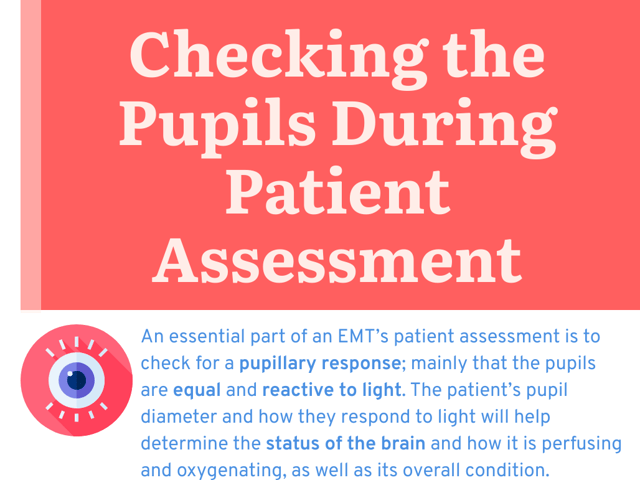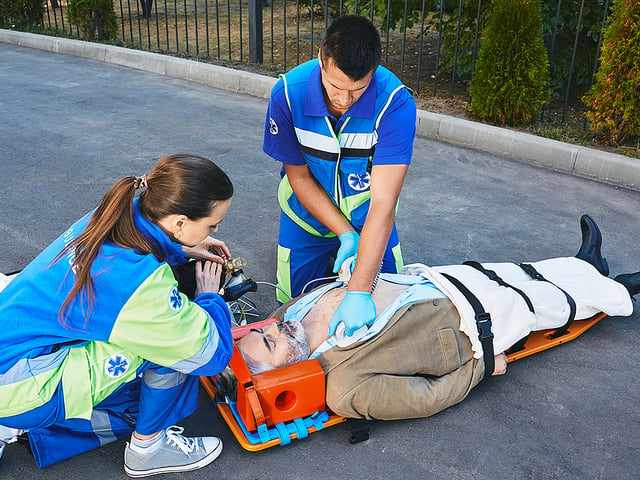
Checking the Pupils During Patient Assessment
An essential part of an EMT’s patient assessment is to check for a pupillary response; mainly that the pupils are equal and reactive to light. The patient’s pupil diameter and how they respond to light will help determine the status of the brain and how it is perfusing and oxygenating, as well as its overall condition.
Normal Pupillary Response
When assessing a patient with no previous underlying eye condition or surgeries, their pupils should appear midsize, approximately 2–4 mm in diameter. In darker environments, their pupils will dilate to allow more light to enter. The pupils will then instantly constrict when a bright light is introduced. Using a penlight, shine the light into one eye, slowly advancing from side to side, checking for constriction. Repeat on the other eye. This is a quick way to determine if the pupils are reacting normally.
Abnormal Responses
The following are abnormal responses when assessing the pupils:
- Fixed pupils do not respond to light.
- Pupils react slowly to light.
- Pupils are unequal in diameter.
- Pupils dilate with light and constrict when the light is removed.
- Pupils become unequal when a light is introduced to the eye.
Causes of Abnormal Pupillary Responses
When a patient has an abnormal pupillary response, which is a sign of impaired brain function, some factors to consider are:
- Drugs or another type of toxin, which will depress the central nervous system
- Trauma to the eye
- Stroke
- Brain or brain stem injury
- Inadequate perfusion or oxygenation
Remember PEARRL
Mnemonics are useful for EMTs in guiding their assessments. PEARRL is one such tool when evaluating pupils. It stands for:
P—Pupils
E—Equal
A—And
R—Round
R—Regular in size
L—React to Light
How to Report Your Findings
If the patient has normal pupils, you will report, “Pupils are PEARRL.” An example of reporting an abnormal finding would be, “Left pupil is regular in size and reacts to light, right pupil is fixed and dilated.”
Don’t forget the pupils. It’s incredible how such a quick assessment of the pupil can help you determine if your patient is neurologically intact. It can be part of a patient assessment that is easy to overlook, but extremely important for every EMT to remember.

Keep Reading

Emergency Medical Technician Test Blog
How Many Questions are on the NREMT?
The National Registry of Emergency Medical Technicians (NREMT) exam is …

Emergency Medical Technician Test Blog
How Hard is the EMT Test?
EMTs (Emergency Medical Technicians) are required to have strong medica…

Emergency Medical Technician Test Blog
What Is a Passing Score on the NREMT Exam?
The job outlook for EMTs and paramedics is strong. The Bureau of Labor …